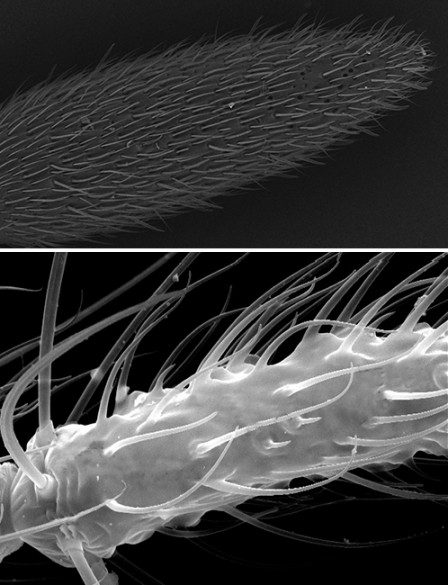
After more than a decade spent successfully decoding the malaria mosquito’s sense of smell, the Zwiebel Lab has added ant olfaction to its research repertoire and has just received a major grant to pursue this new avenue for the next four years.
“Normally, I resist taking on extraneous projects. There is plenty of work yet to be done with mosquitoes,” said Prof. Laurence Zwiebel. “But I couldn’t resist the invitation to study ants because some old friends were involved and it is an area of personal interest: When I was in graduate school, a group of us dreamed about deciphering the role that genes might play in ant social behavior.”
The invitation came two years ago from an interdisciplinary project titled “Epigenetics of Behavior, Longevity and Social Organization in Ants” headed by Danny Reinberg of New York University and funded by the Howard Hughes Medical Institute (HMMI) as part of its Collaborative Innovation Awards program (HCIA).
In 2008 when it funded the first round of projects, including the ant study, HHMI labeled it as a pilot program to see if it would encourage HHMI investigators and outside scientists to attack challenging and important problems that require a team approach. Last week, the Institute declared the program a success and awarded a second round of four-year awards totaling $40 million. The ant project was the only first round program that had its funding renewed. With the renewal, the Zwiebel Lab becomes a full-fledged partner in the research effort.

“When we started working with the mosquito, we started at almost zero because there had been very little research done on its olfactory system,” said Zwiebel. “That put us in a good position to take on the ant, which is another species whose olfactory system hasn’t been studied before.”
The ant study doesn’t have the same public health implications as the study of the malaria mosquito, which has the goal of developing more effective repellents and attractants that can be used to fight the spread of malaria, the researcher acknowledges. However, chemical communication plays a major role in ant behavior. So decoding these chemical signals should provide new insights into how ant colonies work and how complex insect societies evolved among ants, bees, wasps, termites and some beetles.
“The quest for chemosensory inputs that specifically effect social behaviors in ants effectively opens up a whole new and particularly exciting direction for the lab as we go forward with our research,” said Zwiebel.
In the past two years, Zwiebel’s team – with the collaboration of Asst. Prof. Antonis Rokas – have made an impressive start. They have mapped the olfactory systems of two species of ant – the Florida carpenter ant (Camponotus floridanus) and the Indian jumping ant (Harpegnathos saltator) – and have discovered that they have the largest number of odorant receptors of any insect known: four to five times more than most insects. They published these findings in the journal PLoS Genetics on Aug. 30.
“It’s a reasonable supposition that this dramatic expansion in odor-sensing capability is what allowed ants to develop such a high level of social organization,” Zwiebel said.
The new award will bring about $800,000 to Vanderbilt to support this research for the next four years. It will allow the researchers to begin identifying the specific chemical odors to which each of the ant’s 400 odorant receptors respond. To make this task more tractable, they have grouped the ORs into 25 families based on how closely they are related. For example, they have discovered one superfamily of about 150 ORs that all appear to have evolved from a single receptor over the last 200 million years, when ants first appeared.
Because the ant has so many more odorant receptors than the malaria mosquito (400 compared to 74), identifying the chemical signals will be a significantly bigger challenge, Zwiebel estimated. Fortunately, Vanderbilt has automated “high throughput” test facilities that can speed the process.